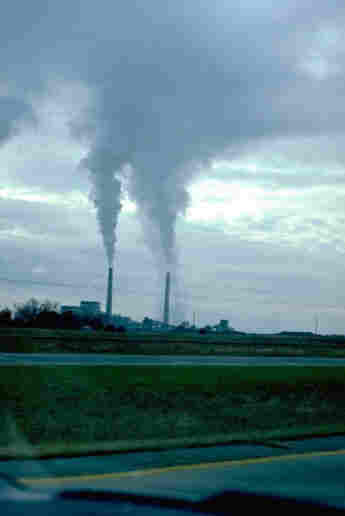|
Carbon monoxide is an odorless and colorless gas. It is
considered the largest single air pollutant caused by the incomplete
combustion of fuels like gasoline. Carbon monoxide reacts with the blood’s
hemoglobin and decreases the capacity for transporting oxygen to the
body’s tissue. It can also cause headaches, dizziness, nausea, and
impair mental processes. It can be lethal.
Nitrogen oxides are yellow to brown gases with a pungent,
irritating odor. It causes leaf damage, irritates eyes and nose, stunts
plants, corrodes metals, and damages rubber. The haze that it produces
in the air is sometimes referred to as smog.
Hydrocarbons are a complex group that forms reactions from
inefficient combustion of carbon-based products. It may be carcinogenic
(cancer producing), retard plant growth, and cause abnormal leaf and bud
development.

Shenandoh Valley, Virginia, smog
|

Industrial output into the atmosphere
|